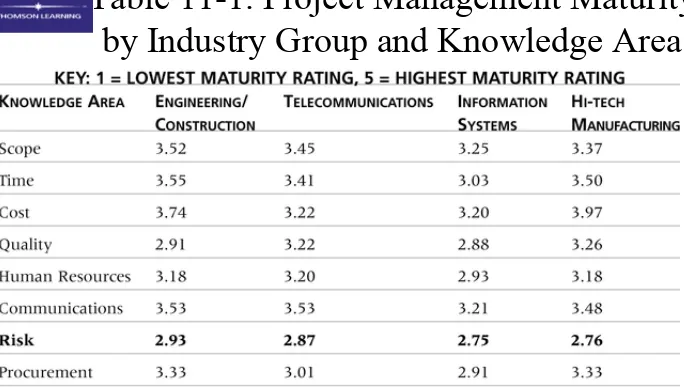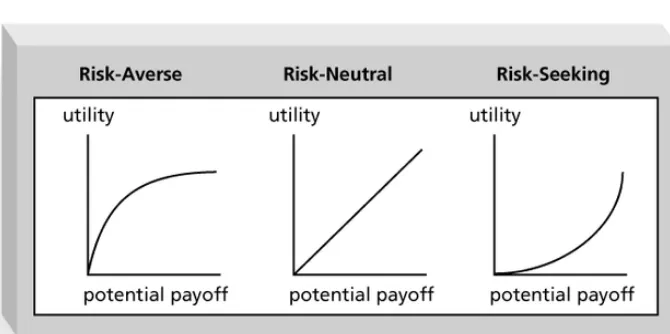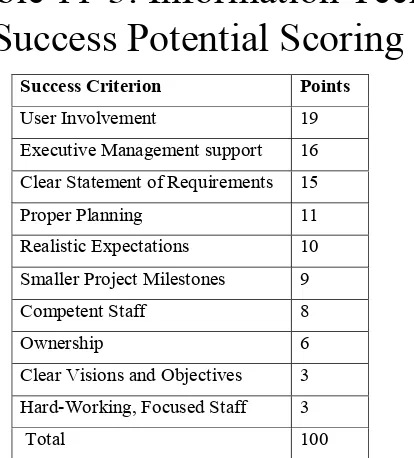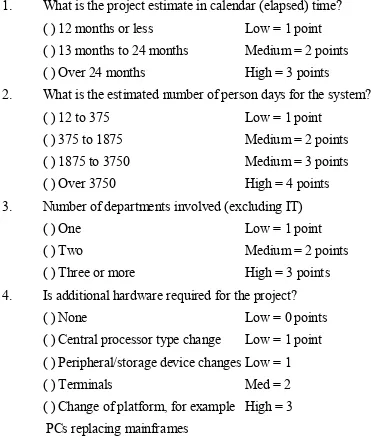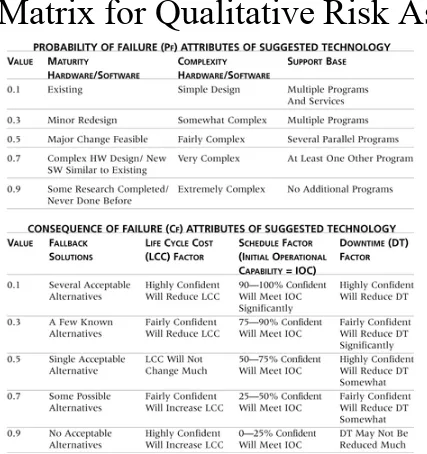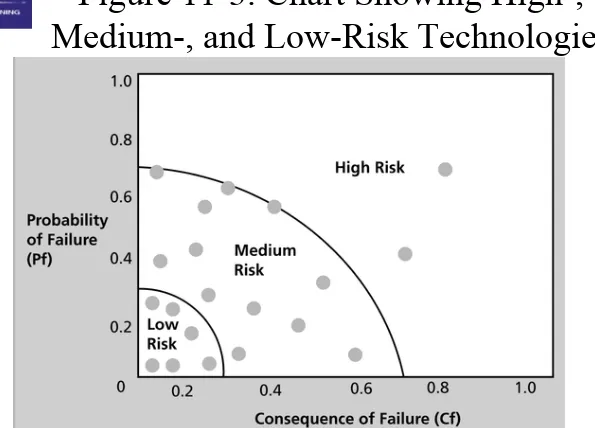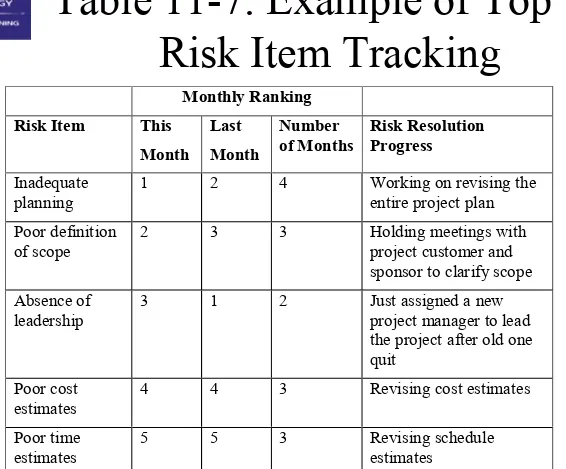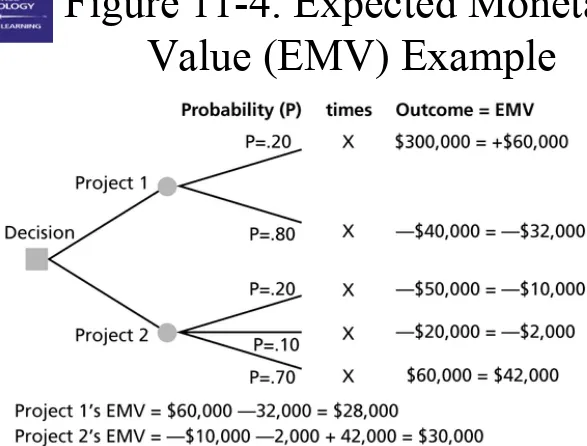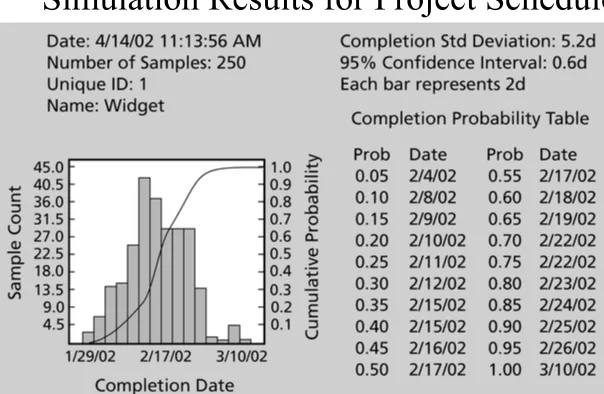Chapter 11:
Learning Objectives
• Understand what risk is and the importance of good project risk management
• Discuss the elements involved in risk management planning • List common sources of risks on information technology
projects
• Describe the risk identification process and tools and techniques to help identify project risks
Learning Objectives
• Explain the quantify risk analysis process and how to use decision trees and simulation to quantitative risks • Provide examples of using different risk response
planning strategies such as risk avoidance, acceptance, transference, and mitigation
• Discuss what is involved in risk monitoring and control • Describe how software can assist in project risk
management
The Importance of Project Risk
Management
• Project risk management is the art and science of
identifying, assigning, and responding to risk throughout the life of a project and in the best interests of meeting project objectives
• Risk management is often overlooked on projects, but it can help improve project success by helping select good
projects, determining project scope, and developing realistic estimates
• A study by Ibbs and Kwak show how risk management is neglected, especially on IT projects
What is Risk?
• A dictionary definition of risk is “the
possibility of loss or injury”
• Project risk involves understanding
potential problems that might occur on the
project and how they might impede project
success
Risk Utility
• Risk utility or risk tolerance is the amount of satisfaction or pleasure received from a
potential payoff
– Utility rises at a decreasing rate for a person who is risk-averse
– Those who are risk-seeking have a higher
tolerance for risk and their satisfaction increases when more payoff is at stake
Figure 11-1. Risk Utility
What is Project Risk Management?
The goal of project risk management is to minimize potential risks while maximizing potential opportunities. Major processes include
– Risk management planning: deciding how to approach and plan the risk management activities for the project
– Risk identification: determining which risks are likely to affect a project and documenting their characteristics
– Qualitative risk analysis: characterizing and analyzing risks and prioritizing their effects on project objectives
– Quantitative risk analysis: measuring the probability and consequences of risks – Risk response planning: taking steps to enhance opportunities and reduce
threats to meeting project objectives
Risk Management Planning
• The main output of risk management planning is a risk management plan
• The project team should review project
documents and understand the organization’s and the sponsor’s approach to risk
Contingency and Fallback Plans,
Contingency Reserves
• Contingency plans are predefined actions that the project team will take if an identified risk event occurs
• Fallback plans are developed for risks that have a high impact on meeting project objectives
• Contingency reserves or allowances are
provisions held by the project sponsor that can be used to mitigate cost or schedule risk if
Common Sources of Risk on
Information Technology Projects
• Several studies show that IT projects sharesome common sources of risk
• The Standish Group developed an IT success potential scoring sheet based on potential risks • McFarlan developed a risk questionnaire to help
assess risk
Table 11-3. Information Technology
Success Potential Scoring Sheet
Success Criterion Points
User Involvement 19
Executive Management support 16 Clear Statement of Requirements 15
Proper Planning 11
Realistic Expectations 10 Smaller Project Milestones 9
Competent Staff 8
Ownership 6
Clear Visions and Objectives 3 Hard-Working, Focused Staff 3
Table 11-4. McFarlan’s Risk Questionnaire
1. What is the project estimate in calendar (elapsed) time? ( ) 12 months or less Low = 1 point ( ) 13 months to 24 months Medium = 2 points ( ) Over 24 months High = 3 points
2. What is the estimated number of person days for the system? ( ) 12 to 375 Low = 1 point
( ) 375 to 1875 Medium = 2 points ( ) 1875 to 3750 Medium = 3 points ( ) Over 3750 High = 4 points 3. Number of departments involved (excluding IT)
( ) One Low = 1 point ( ) Two Medium = 2 points ( ) Three or more High = 3 points 4. Is additional hardware required for the project?
Other Categories of Risk
• Market risk: Will the new product be useful to the organization or marketable to others? Will users accept and use the product or service?
• Financial risk: Can the organization afford to undertake the project? Is this project the best way to use the company’s financial resources? • Technology risk: Is the project technically
What Went Wrong?
Risk Identification
• Risk identification is the process of
understanding what potential unsatisfactory
outcomes are associated with a particular project • Several risk identification tools and techniques
include
– Brainstorming
– The Delphi technique – Interviewing
Table 11-5. Potential Risk Conditions
Associated with Each Knowledge Area
Knowledge Area Risk Conditions
Integration Inadequate planning; poor resource allocation; poor integration management; lack of post-project review
Scope Poor definition of scope or work packages; incomplete definition of quality requirements; inadequate scope control
Time Errors in estimating time or resource availability; poor allocation and management of float; early release of competitive products Cost Estimating errors; inadequate productivity, cost, change, or
contingency control; poor maintenance, security, purchasing, etc. Quality Poor attitude toward quality; substandard
design/materials/workmanship; inadequate quality assurance program
Human Resources Poor conflict management; poor project organization and definition of responsibilities; absence of leadership
Quantitative Risk Analysis
• Assess the likelihood and impact ofidentified risks to determine their magnitude and priority
• Risk quantification tools and techniques include
– Probability/Impact matrixes
Top 10 Risk Item Tracking
• Top 10 Risk Item Tracking is a tool formaintaining an awareness of risk throughout the life of a project
• Establish a periodic review of the top 10 project risk items
• List the current ranking, previous ranking, number of times the risk appears on the list over a period of time, and a summary of
Table 11-7. Example of Top 10
1 2 4 Working on revising the
entire project plan Poor definition
of scope
2 3 3 Holding meetings with
project customer and sponsor to clarify scope Absence of
leadership
3 1 2 Just assigned a new
project manager to lead the project after old one quit
Poor cost estimates
Expert Judgment
• Many organizations rely on the intuitive
feelings and past experience of experts to help identify potential project risks
• Experts can categorize risks as high, medium, or low with or without more sophisticated
Quantitative Risk Analysis
• Often follows qualitative risk analysis, but both can be done together or separately
• Large, complex projects involving leading edge technologies often require extensive quantitative risk analysis
• Main techniques include
Decision Trees and Expected
Monetary Value (EMV)
• A decision tree is a diagramming method used to help you select the best course of action in situations in which future outcomes are
uncertain
• EMV is a type of decision tree where you calculate the expected monetary value of a
Simulation
• Simulation uses a representation or model of a system to analyze the expected behavior or performance of the system
• Monte Carlo analysis simulates a model’s outcome many times to provide a statistical distribution of the calculated results
• To use a Monte Carlo simulation, you must have three estimates (most likely, pessimistic, and optimistic)
What Went Right?
A large aerospace company used Monte Carlo simulation to help quantify risks on several advanced-design engineering projects. The National
Aerospace Plan (NASP) project involved many risks. The purpose of this multibillion-dollar project was to design and develop a vehicle that could fly into space using a single-stage-to-orbit approach. A single-stage-to-orbit approach meant the vehicle would have to achieve a speed of Mach 25 (25 times the speed of sound) without a rocket booster. A team of engineers and business professionals worked together in the mid-1980s to develop a software model for estimating the time and cost of developing the NASP. This model was then linked with Monte Carlo simulation software to
Risk Response Planning
• After identifying and quantifying risks, you must decide how to respond to them
• Four main strategies:
– Risk avoidance: eliminating a specific threat or risk, usually by eliminating its causes
– Risk acceptance: accepting the consequences should a risk occur
– Risk transference: shifting the consequence of a risk and responsibility for its management to a third party
Risk Monitoring and Control
• Monitoring risks involves knowing their status • Controlling risks involves carrying out the risk
management plans as risks occur
• Workarounds are unplanned responses to risk events that must be done when there are no contingency plans
Risk Response Control
• Risk response control involves executing the risk management processes and the risk management plan to respond to risk events
• Risks must be monitored based on defined
milestones and decisions made regarding risks and mitigation strategies
• Sometimes workarounds or unplanned responses to risk events are needed when there are no
Using Software to Assist in
Project Risk Management
• Databases can keep track of risks. Many ITdepartments have issue tracking databases
• Spreadsheets can aid in tracking and quantifying risks
Figure 11-5. Sample Monte Carlo
Results of Good Project Risk
Management
• Unlike crisis management, good project risk management often goes unnoticed
• Well-run projects appear to be almost effortless, but a lot of work goes into running a project
well
